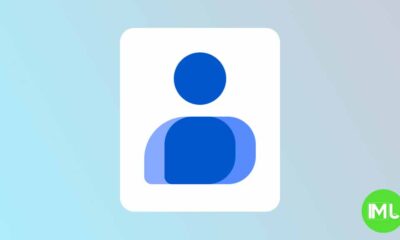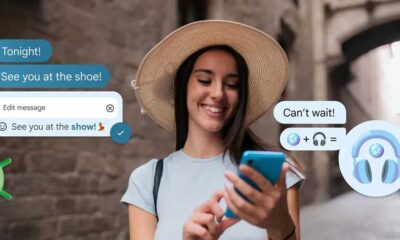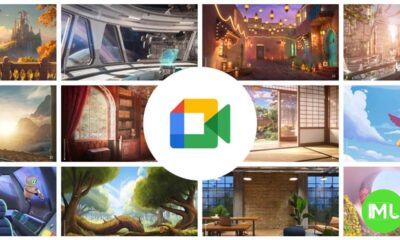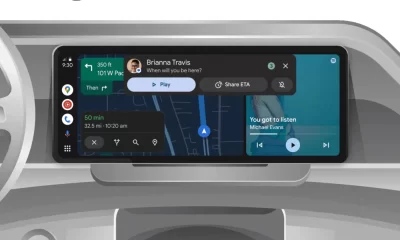Enhancements in Chrome 131 on Android: Improved autofill and a cleaner Google Maps interface

Google is rolling out several updates with the upcoming release of Chrome 131 for Android. This update brings significant improvements, particularly for users who rely on third-party password managers, along with a more streamlined Google Maps interface.
Chrome 131: Better Autofill with Third-Party Password Managers
Chrome 131, scheduled for a stable release on November 12, introduces native support for third-party autofill services on Android. Previously, users experienced issues with autofill, such as glitchy page scrolling and duplicate suggestions when using password managers other than Google’s built-in service. This was because Chrome operated in a “compatibility mode” for autofill, which sometimes caused a disjointed user experience.
With Chrome 131, third-party services can now seamlessly autofill passwords, passkeys, addresses, payment details, and other stored information. This makes the autofill process smoother and faster, offering a better experience for users who prefer alternatives like LastPass, 1Password, or Bitwarden.
To activate this feature, Android 14+ users can navigate to their device’s settings through Settings > Passwords, passkeys & accounts. From there, they can choose a third-party service for autofill. In Chrome, under Settings > Autofill Services, selecting “Autofill using another service” enables this feature. Users need to restart the browser for the changes to take effect.
If you’re using Chrome 131 in beta, you can further enhance your autofill experience by enabling the following flag:
chrome://flags#enable-autofill-virtual-view-structure
Google has announced that Chrome will discontinue the older compatibility mode for autofill by early 2025. Therefore, users should switch to third-party autofill in Chrome settings to avoid any disruption in their experience once this mode is deprecated. Encouraging users to toggle the autofill option ensures that they enjoy seamless functionality with third-party services.
Google Maps: Relocating the Weather Widget for a Cleaner View
Along with Chrome updates, Google Maps on Android is also seeing a minor but important interface change. Earlier this year, the app introduced a weather display on the top-left corner, providing real-time information on temperature, weather conditions, and air quality index (AQI). However, Google is now relocating this weather widget to declutter the main map view.
The weather information will no longer overlay the map but will instead be housed in the “Latest in the area” section, located at the bottom of the screen. This section displays relevant updates for the user’s current city, neighborhood, or nearby attractions. When expanded, the weather will appear in the top-right corner, and in the bottom-right corner when the information panel is minimized. To access this panel, users simply need to interact with the map or swipe up from the bottom.
This repositioning helps make the map more visually clean and less crowded with elements. The bottom panel’s collapsible feature also allows users to explore the map with fewer distractions. Although this change might slightly reduce the ease of checking weather conditions while navigating, the overall map view gains clarity.
The revamped interface is currently being tested in the beta version of Google Maps (version 11.151.x), with an expected stable release in the coming updates. However, users who prefer quick access to weather information may find this change less convenient, as the display area is slightly reduced when the bottom panel is expanded.
Final Thoughts
With Chrome 131 and the updated Google Maps, Android users can expect improved functionality and a cleaner, more efficient experience. The autofill improvements in Chrome ensure that third-party password managers integrate more naturally, while the changes in Google Maps make navigation more visually appealing by decluttering the interface. These updates highlight Google’s ongoing efforts to enhance usability and streamline the overall experience for Android users.
Both features are currently in beta but are expected to reach all users soon, making Android even more user-friendly with optimized browsing and navigation.
Google Meet gets a fresh new look with Material 3 design

Google Meet is getting a big update to its look, thanks to the new Material 3 design. This change brings a cleaner and more modern style to the video calling app, making it easier and more enjoyable to use.
With Material 3, Google Meet now has rounder buttons, softer colors, and better spacing between elements. The main controls, like the microphone, camera, and end call buttons, are now larger and easier to tap. The icons and text are also clearer, which helps users find what they need quickly during a call.
Another improvement is the new “expressive” color system. This feature lets the app’s colors match your device’s wallpaper or theme, giving each user a unique and personalized experience. The changes also make Google Meet more accessible, as the new design is easier to read and use for everyone, including people with vision difficulties.
These updates are rolling out to both web and mobile versions of Google Meet. Google says the new look will help people feel more comfortable and focused during their meetings. Overall, the Material 3 update makes Google Meet not only look better but also work better for all its users.
Android
Easy ways to change Android Auto’s look with light and dark themes

Android Auto is a helpful tool that lets you use your phone’s apps safely while driving. It connects your phone to your car’s screen, making it easier to use maps, music, and calls. One of the features many people like is the ability to change how Android Auto looks by switching between light and dark themes.
How to switch between light and dark themes
Android Auto offers two main themes: light and dark. The light theme uses brighter colors, which can make the screen easier to see during the day. The dark theme uses darker colors, which can be more comfortable for your eyes at night or in low light.
To change the theme, follow these steps:
- Open the Android Auto app on your phone.
- Go to the settings menu.
- Find the “Theme” option.
- Choose between “Light,” “Dark,” or “Set by car” (this lets your car decide the theme based on the time of day or your car’s settings).
Why themes matter
Using the right theme can make driving safer and more comfortable. The light theme is good for bright days, while the dark theme helps reduce glare at night. Having these options means you can pick what works best for you, making Android Auto easier to use in any condition.
In short, Android Auto’s theme options are simple to use and help you drive more safely by making the screen easy to see, no matter the time of day.
Google Drive and Files by Google get fresh updates for easier use

Google is rolling out some helpful updates to two of its popular apps: Google Drive and Files by Google. These changes are designed to make managing your files and watching videos much smoother.
First, Google Drive is getting a new video player. Now, when you upload a video to Drive and open it, you’ll notice a fresh look that matches Google’s latest design style. The controls, like play and pause, are easier to use and look cleaner. This update makes it simpler to watch videos directly in Drive without needing to download them first.
Meanwhile, the Files by Google app is also getting a makeover. The app is adopting Google’s Material 3 design, which means it looks brighter and more modern. The buttons and menus are easier to see and use, making it simpler to find, move, and organize your files. There are also new color options and improved icons, so everything feels more user-friendly.
Both updates show Google’s commitment to making its apps more helpful and enjoyable to use. Whether you’re watching videos in Drive or sorting files on your phone, these changes aim to save you time and make things less complicated. If you use these apps, keep an eye out for these new features—they should arrive soon!
-

 Apps1 year ago
Apps1 year agoGboard Proofread feature will support selected text
-

 News1 year ago
News1 year agoSamsung USA crafting One UI 6.1.1
-

 Apps12 months ago
Apps12 months agoGoogle Contacts app testing new Besties Widget
-

 AI12 months ago
AI12 months agoGoogle Pixel 9 Pro may come with a complimentary one-year Gemini Advanced subscription
-

 News1 year ago
News1 year agoBreaking: Samsung Galaxy S22 may get Galaxy AI features
-

 Apps12 months ago
Apps12 months agoGoogle working on a new video editing feature for its Photo app
-

 Apps12 months ago
Apps12 months agoGoogle Maps lets you report traffic jams and accidents on Apple CarPlay, but not on Android Auto
-

 Apps12 months ago
Apps12 months agoGoogle Messages app will transform MMS chats into RCS










